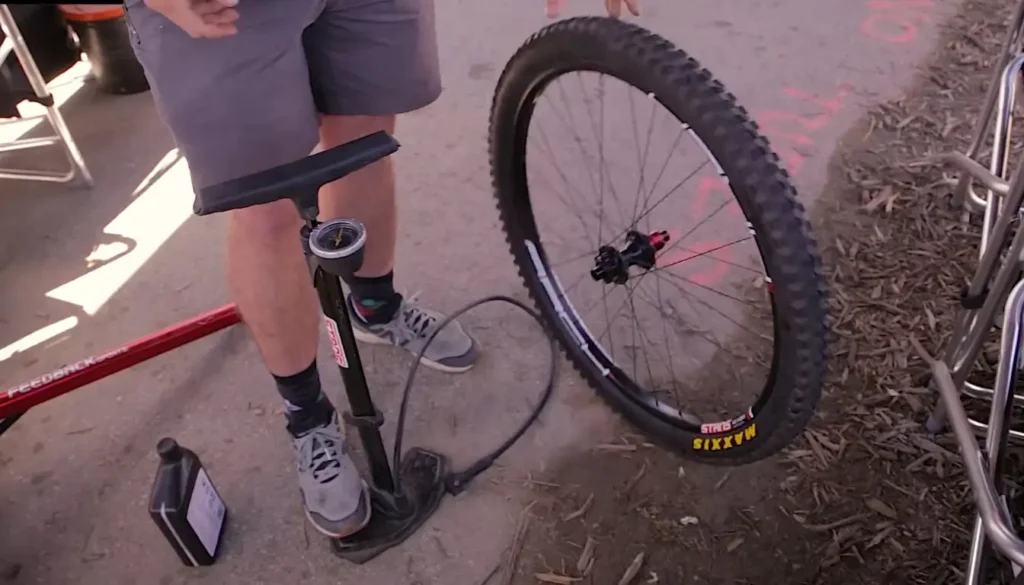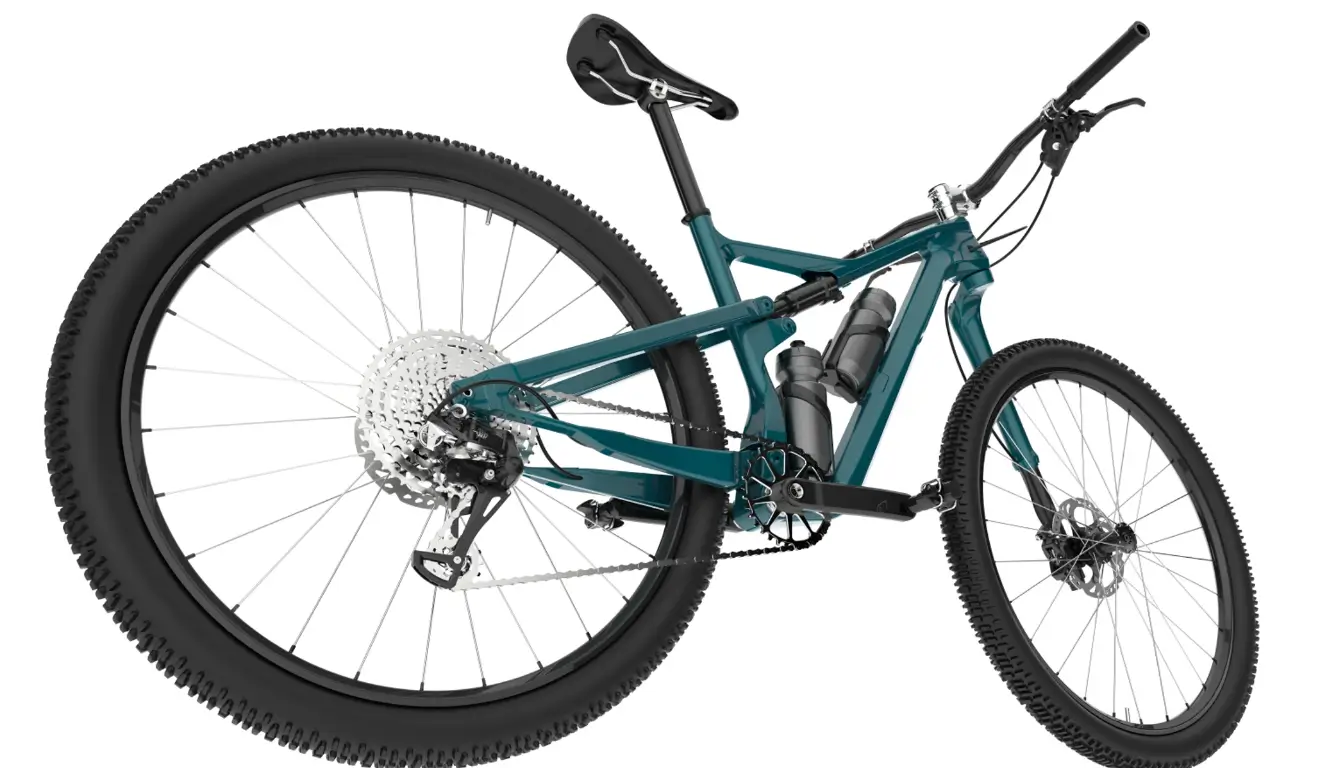Tubeless tires are a type of wheel configuration that does not include an inner tube within the wheel itself. They achieve this by replacing the inner tube with a latex sealant, which is an ingenious solution that significantly improves the puncture resistance of the tires.
When riding at high speeds off-road, riders who do not have an inner tube protect themselves from the all-too-common problem of pinch flats. Tubeless tires are watertight, and the bed of the rim is airtight, so there is no possibility of air leaking out of the tire even when the tire is gripped firmly.
The vast majority of tubeless systems make use of sealant, which is a liquid that is injected through the valve and works to patch up any small holes that might otherwise lead to a puncture. The majority of the time, the action of the sealant takes only a few seconds and causes only a slight decrease in pressure.
Advantages of Tubeless Tires
Why even go tubeless in that case? The risk of puncturing is greatly decreased, which is the main benefit and a significant one. There is no internal tube to puncture, so there are no pinch flats where the internal tube is squished between both the rim and tire or sharp objects puncturing the tire, which happen less frequently.
One more component is required in order to maximize the benefits of tubeless and to provide additional puncture durability in the lack of the inner tube, and that is a liquid sealant. When the tire chassis is punctured, this sloshes around within the tire and reacts with air to plug the hole. While there may be a slight drop in pressure, it can usually seal the majority of tiny holes left by thorns or flint, so you can continue to ride.
They move quickly. Rolling resistance is frequently asserted to be lower since there aren’t two sets of material pushing against one another, and tires can change shape more easily. Tubeless tires are the quickest that have been produced if the claims of many tire companies are to be believed. It’s possible that they’re just making this up to sell tires.
A tubeless tire can also be operated at a reduced pressure because there is no inner tube and no chance of pinch punctures. Since there is extra support from the tire, comfort is increased. According to our experience, tubeless tires outperform the majority of tubed tire and inner tube configurations in terms of comfort and ride quality.
Traditional road bike riders are doubtful to be interested in lowering the pressure in narrow tires, despite the fact that mountain bikers find this ability to ride at lower pressures appealing because they value the improved grip and absence of pinch flats. The benefits of tubeless driving might be misplaced if your track pump can only deliver 125 psi.
Our research shows that a tubeless tire performs best when inflated 12 to 22 psi less than a clincher tire of equal size. However, as wider tires become more popular, it makes more sense to be able to operate securely at low pressures. A compelling case for tubelessness is made by the prevalence of endurance bikes with tires that are 27mm wide or wider, as well as gravel and adventure bikes with tires that are even wider.
The following is a summary of the benefits:
● Improved resistance
● Allows running at lower pressure
● Better grip
● Provides more traction
● Self-Sealing
● Cheaper, in the long run,
● Better maneuverability
Disadvantages of Tubeless Tires
The transition to tubeless road tires does not come without a few drawbacks, unfortunately. Even though you do not have as large of a selection to choose from when it comes to wheels and tires, the situation has significantly improved over the past few years.
There are now many wheel manufacturers that offer wheelsets that are compatible with tubeless systems. Some of these wheel manufacturers offer dual compatibility with tubed tires, making them an ideal upgrade path. If you have recently purchased a new bike, there is a good chance that the rims on it are tubeless-ready.
While there are more wheel options available, there are fewer options available for tires, which is the most significant barrier to adopting tubeless technology. The German company Schwalbe is the one that has shown the most interest and commitment among tire manufacturers.
There is hardly any difference in the ride quality or the amount of weight penalty. Other options include those made by Vittoria and Bontrager, but major manufacturers have not shown much interest in producing tubeless tires as of yet.
The most important thing to keep in mind is that putting on a tubeless tire isn’t quite as easy as putting on an inner tube. This is not helped by the fact that there is not a single integrated requirement that all manufacturers of rims and tires adhere to, which results in some configuration errors between some combinations of rims and tires.
In addition to a tubeless tire, you will need a compatible rim, which may require the installation of a unique rim tape, a tubeless valve (which must be long enough and threaded so that the pump can be attached to it), and a bottle of sealant.
A brief rundown of the disadvantages:
● Initial cost can be expensive
● Needs to be serviced often
● Tubes are easier to install
● Pressure loss during rides
● Tire “burping”
● Sealants can coagulate in a matter of months
● Valves can coagulate too
Should you Buy Tubeless Tires?

Yes, tubeless tires should definitely be purchased. The reasons for that are quite simple. Tubeless tires are much less of a hassle and provide significantly greater performance.
On top of that, puncture and flat resistance are also much better, lowering long-run costs. These tires are also easily repairable by individuals themselves. The ability to run at lower pressures and more traction allows for a more smooth and more comfortable ride. Any bike enthusiast would be delighted with tubeless tires.
Conclusion
With the introduction of tubeless tires, biking has not been easier. Allowing greater performance, higher resistance to flats, and a much easier self-repairing process, tubeless tires are a pinnacle and will only get better with time.

